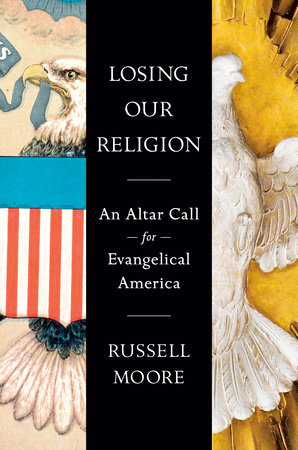The phrase “stirring the pot” is a figure of speech used when someone raises a controversial question in order to stimulate dialogue. I won’t be too controversial here on Dr. Moore’s blog, but I do think what I am about to assert is interesting:
English translations need to revisit the way that the books of the Old Testament are ordered.
Let me put it another way:
The only basis for the way that English translations order the books of the Old Testament is modern convention.
The order we use today seems to have arisen with the printing press. There is no ancient precedent for the order of the Old Testament books we find in our English translations.
Roger Beckwith (The Old Testament Canon of the New Testament Church, esp. 181–234)has convincingly demonstrated that the oldest arrangement of the books of the OT was the tripartite division of the books into Law, Prophets, and Writings reflected in the words of Jesus in Luke 24:44,
“These are my words that I spoke to you while I was still with you, that everything written about me in the Law of Moses and the Prophets and the Psalms must be fulfilled.”
This statement indicates that when Jesus thought of the Old Testament, he thought of three sections. Those three sections broadly match the order of the Old Testament books in Hebrew Bibles today: Torah (Law), Neviim (Prophets), and Ketuvim (Writings). Thus the acronym TaNaK (Torah, Neviim, Ketuvim—a list of the books is here). Ancient evidence for this tripartite division of the OT is also found in the prologue to the apocryphal book Ecclesiasticus, in the text found among the Dead Sea Scrolls known as 4QMMT, and in the Babylonian Talmud’s Baba Bathra 14b.
Another indication that Jesus thought of the OT in these terms is his statement in Matthew 23:34–36 paralleled in Luke 11:49–51. In these texts Jesus speaks of “the blood of all the prophets . . . from the blood of Abel to the blood of Zechariah . . .” This seems to be Jesus’ way of referring to all the martyrs in the OT, from start to finish. The murder of Abel is near the beginning in Genesis 4, and the murder of Zechariah is near the end in 2 Chronicles 24. Jesus’ statement only works, though, if Chronicles is near the end of the OT. In the tripartite division of the OT into Law, Prophets, and Writings, Chronicles is in the last section, the Writings. The order of the OT books used in modern English translations makes it difficult to understand what Jesus is talking about.
So how did the order of the OT books in English translations come about? Roger Beckwith (The Old Testament Canon of the New Testament Church, 182) explains that once the early church lost contact with its Jewish roots (Origen and Jerome were rare among the early fathers in that they could read Hebrew), the desire to arrange the books of the OT according to Alexandrian standards won the day.
It seems to me that three considerations argue decisively against continuing to follow the early church fathers in their rearrangement of the order of the books of the OT.
First, the order we find in English translations today doesn’t match the order we find in statements from the early church fathers. That is to say, there is no single “Christian” order of the books of the OT to be found in the writings of the early church fathers, so it is impossible to claim that modern publishers of the Bible are following Christian tradition that derives from the early church. The order given by Melito of Sardis differs from the order given by Origin, and different orders are given by Epiphanius, as is also the case with Jerome. There does not seem to have been a uniform “Christian” order to the books of the OT until the rise of the printing press. The order of the books of the OT in Codex Vaticanus does not match the order of the books of the OT in Codex Sinaiticus. More evidence could be cited, but it’s all in Beckwith’s book. Here’s hoping that Beckwith’s book will be reprinted! So the first reason that we should adopt the tripartite division of the OT into Law, Prophets, and Writings over against a “Christian” order of the books of the OT is that there is no “Christian” order of the books of the OT to be adopted.
The second reason we should adopt the tripartite division of the books of the OT (Law, Prophets, and Writings) in English translations today as opposed to a (non-existent) “Christian” order of the books of the OT has to do with the way that the Reformers delimited the Old Testament canon. Put simply, at the Reformation the Protestants excluded the Apocrypha from the OT because they followed the Hebrew tradition rather than the Septuagint tradition. That is, the Jews never considered the Apocrypha to be part of the OT, nor does the NT indicate that the Apocryphal books were ever regarded as canonical. Beckwith helpfully suggests that the appearance of various Apocryphal works in both Codex Sinaiticus and Codex Vaticanus reflects the reading habits of the early church rather than the canonical status of the Apocryphal books included (195). Still, various early church fathers regarded various Apocryphal books as belonging in the OT canon. In the same way that most Protestants today follow the Reformers by following Hebrew tradition and concluding that the Apocryphal books are not canonical, why should Protestant publishers of English translations of the Bible not follow the Hebrew tradition in the order of the books of the OT? Why should English translations of the Bible today follow Hebrew tradition on the question of which books should be in the OT, but then refuse to follow Hebrew tradition on the question of how the books of the OT should be ordered? Again, we cannot claim that the order of the OT books in English translations today follows the order reflected in the Septuagint because (1) there is no uniform order in Septuagint manuscripts and (2) Septuagint manuscripts include the Apocrypha.
The final decisive reason, to my thinking, as to why English translations should order the books of the OT today according to the tripartite structure of Law, Prophets, and Writings has already been mentioned: this is the order Jesus knew and acknowledged. Luke 24:44 and Matthew 23:34–36 paralleled in Luke 11:49–51 indicate that Jesus knew and accepted the order of Law, Prophets, and Writings. The fact that Matthew and Luke include these statements in their gospels with no explanatory comment indicates that they expected their audiences to be familiar with this order of the OT books. Thus, I would argue that the earliest church knew and accepted the order of the OT books acknowledged by Jesus, and only once the Jewish roots were cut did the church fathers begin to exercise the freedom of rearranging the books of the OT. All this to say: why shouldn’t followers of Jesus today follow him in his understanding of the order of the books of the OT? Since it is the order acknowledged by Jesus, isn’t the tripartite division into Law, Prophets, and Writings the truly Christian order of the books?
To summarize: We should accept the tripartite division of the OT into Law, Prophets, and Writings, and we should order English translations of the books of the OT accordingly because (1) the order in use by English translations now does not match the orders of the books in lists drawn up by early church fathers; (2) Protestants have agreed with Hebrew tradition rather than Septuagint tradition on which books should be included between the covers of the Bible, so Protestants should also agree with Hebrew tradition on how those books should be arranged; and (3) this is the order that Jesus endorsed and that Matthew and Luke apparently expected their audiences to recognize.
If you’ve read to this point, you may be asking the valid question, “What difference does the order of the books of the OT make?” David Noel Freedman has put forward the argument that Ezra and Nehemiah collaborated on the canonization of the books of the OT, and he argues that Ezra and Nehemiah built a symmetry into the OT. In other words, they put the books of the OT into an intentional order that itself communicated their view regarding the overall message of the OT. I don’t agree with everything Freedman has asserted (see a two part interview with him: part 1 and part 2), but what if he is right about Ezra and Nehemiah arranging the books of the OT such that the very arrangement of the books themselves communicates their understanding of the OT’s message? In my view, only inspired prophets would have been able to do what Freedman suggests Ezra and Nehemiah did. If he is right that they built an intentional structure into the arrangement of the OT books, should that arrangement be considered inspired? I doubt that question will be settled, but we can ask similar questions: if the arrangement was intended by Ezra and Nehemiah, does the reorganization of the books of the OT make it harder for people to understand the over-arching message of the OT? And again, even if the arrangement is not inspired, by undoing that arrangement, does the reorganization of the books of the OT not make it harder to see what Jesus was saying?
I have a French translation of the Bible, La Bible en francais courant, that arranges the books of the OT according to the tripartite structure of Law, Prophets, and Writings. I would love to see an English translation of the Bible follow suit.
What do you think?






